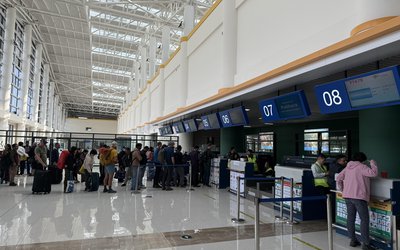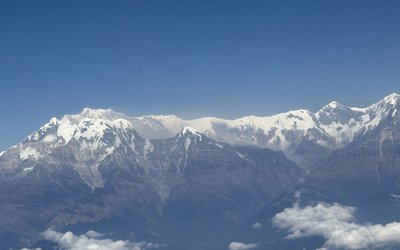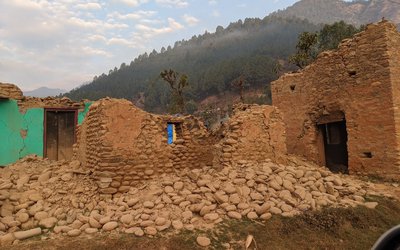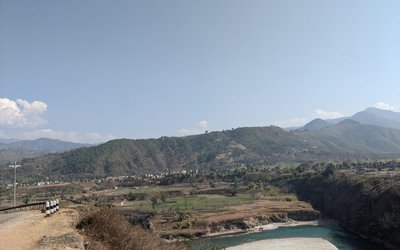
With the frequency of national and international flights increases in Tribhuwan International Airport, there require more safety measures and safety related instruments.
Keeping in the mind to enhance air safety, Nepal government approached Japanese government for support. Supporting Nepal to establish the first radar back in 1995, Japan agreed to provide sophisticated new radar at TIA.
With the financial and technical assistance of Japan International Cooperation Agency (JICA), Civil Aviation Authority has installed En-route Monopulse Secondary Surveillance Radar (E-MSSR) at Bhattedanda of Lalitpur and Terminal Monopulse Secondary Surveillance Radar (T-MSSR) at Tribhuvan International Airport (TIA).
Given high importance to its commitment, Japanese ambassador to Nepal, Masashi Ogawa, himself visited Bhattedada to see the installation and project along with media persons and senior official of Civil Aviation Authority of Nepal (CAAN). After inspection of the site, Japanese ambassador Masashi Ogawa expressed the hope that the second generation of radar system will help Nepal to improve aviation safety.
CAAN Director General Sanjeev Gautam said that the aviation sector regulator was planning to install a new radar system in Bhairahawa.
Civil Aviation Authority of Nepal (CAAN) is starting full-fledged operation of Mode S Monopulse Secondary Surveillance Radar (MSSR), which was installed at Bhattedanda of Lalitpur 14 months ago, from February 1.
Jun Sakuma, chief representative of JICA Nepal, said that the new radar system will improve the safety of aircraft flying in Kathmandu Flight Information Region (FIR) through continuous monitoring and control. “The new T-MSSR installed at TIA has a capacity of 200 nautical miles, while the Enroute-MSSR installed at Bhattedanda has coverage of 250 nautical miles,” said Jun Sakuma.
According to Sakuma, the new radar will cover almost all international flights while it will cover around 97 percent of domestic flights. “It will increase airspace capacity and control the air traffic in an easier manner than the previous one,” he added.
The new radar surveillance system will cover the speed, height, and distance of aircrafts up to Surkhet in the mid-western region and the entire eastern region.
“The new radar system will not cover the high Himalayan region. This radar is the latest generation of a radar system. It has precise identification capabilities as well as the capacity of selective interrogation,” said Sanjeev Singh Kathayat, project director of the new radar surveillance system. “It gives an accurate position of the aircraft as well as can identify almost 17 million aircraft.”
The existing radar system has the capacity to identify only 4096 aircraft.
“These days the movement of aircraft is increasing day by day and so does the air traffic,” said Kathayat. “So to address this situation, the new radar will help to control the air traffic by monitoring the distance and speed of the aircraft.”
The new radar system can monitor altitude, speed, and distance of aircraft, as well as provide vectoring and separation service, he added.
With the most updated and new version of new radar system at their hand, air traffic Controllers (ATCs) also said that the new system will help them to monitor speed, altitude and distance of the aircraft.
CAAN is operating the new radar in the trial phase at present. Though the new system will formally come into operation on February 1, CAAN intends to operate the existing system as a backup for the time being. “The new system is ready for operation. But we are still making some safety assessments which will take at least two or three months. Till then, the old system will work as a backup.”The radar installation project began in 2013 with the investment of Rs 1 billion. The installation was expected to be completed by 2015. However, the 2015 earthquakes and economic blockade by India affected installation works, according to officials.
JICA handed over the project to CAAN in October 2016. CAAN completed the remaining works in December 2016. CAAN conducted successful flight inspection using the new radar system in November 2017.
After two catastrophic air accidents in 1992, in which a Thai Airways plane and a Pakistan International Airlines plane clashed in a very short interval, Nepal government realized to have radar.
Responding to a strong desire of the Government of Nepal that such accidents shall not be repeated, the Government of Japan, since 1994, has been implementing various projects to improve the safety of Nepal’s air space. These include grant projects, technical cooperation projects and the dispatching of Japanese experts.
Upon the completion of the Tribhuvan International Airport Modernization Project (surveillance system), two cutting-edge radars were installed at Bhattedada and Tribhuvan International Airport. These radars can monitor most of the Nepali skies and also help the controllers gain precise information about the position and identification of aircrafts in flight. Thanks to these radars, Nepal’s air safety is expected to dramatically improve. Detaild information thorough new system.jpg
The radar flight inspection having completed in last November, formal operation of these radars will start in February 2018.
According to a press release issued by Embassy of Japan, over the years, the government of Japan has been implementing aviation-related projects in partnership with the Government of Nepal. The Embassy of Japan will continue to work to further improve Nepal’s air safety.


- GLOBAL IME BANK: Celebrating Eighteen Years of Progress
- Jan 13, 2025
- JALPADEVI CABLE CAR: IME Group's Latest Project
- Jan 12, 2025
- NIMB Achieves Accreditation With Green Climate Fund (GCF)
- Jan 10, 2025
- NATIONAL UNITY DAY: Unity Trail
- Jan 10, 2025
- TOURISTS ARRIVAL: Surpass A Million
- Jan 10, 2025















